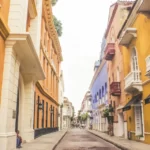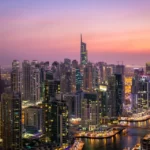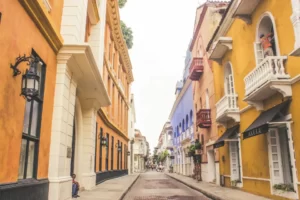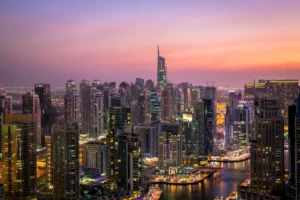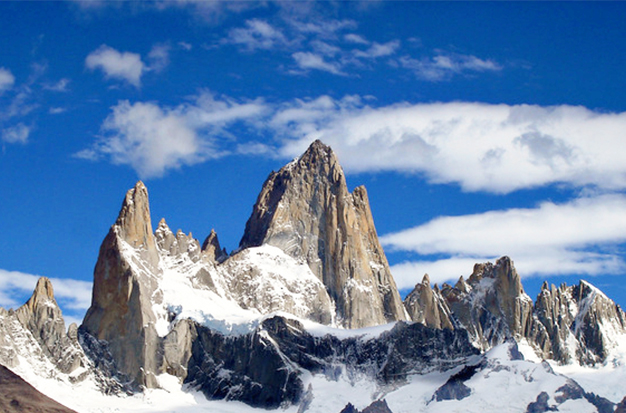
Argentina and Chile both share the vast southern tip of South America, which is known as Patagonia. The Andes Mountains serve as its boundary. Steppes, grasslands, and deserts are present on the Argentinean side, while glacial fjords and temperate rainforests are present on the Chilean side.
South of Argentina and Chile lies the far-off and legendary Patagonia. Because exploring it is difficult, we can infer that it reserves its most valuable treasures for the most daring explorers. Where is Patagonia specifically and what do you need to know to know it?
Argentina and Chile both share the vast southern tip of South America, which is known as Patagonia. The Andes Mountains serve as its border. Arid steppes, grasslands, and deserts can be found in Argentina, whereas glacial fjords and temperate rainforests can be found in Chile.
You must take a flight to Buenos Aires before connecting on internal routes to the various cities in the southern region if you want to travel to Argentine Patagonia. To get to Chilean Patagonia, you must take a flight to Santiago de Chile and then travel within Chile until you get there.
Where Is Patagonia Located?
The southernmost region of the American continent is known as Patagonia. It covers the farthest-reaching provinces of Argentina: Antarctica, the South Atlantic Islands, Neuquén, Rio Negro, Chubut, Santa Cruz, and Tierra del Fuego are just a few of the places with unique qualities that set them apart from other places. It also covers a tiny portion of Mendoza, Buenos Aires, and La Pampa’s southern regions (Patagones party).
Patagonia in Chile consists of the Palena province, the Aysen and Magallanes regions, but not the Chilean Antarctic Territory. Presently, it is preferred to limit this to the territory of Chilean Patagonia in order to distinguish it from the region farther north of the Corcovado Gulf (Lake region). However, studies in geology demonstrate the conjunction and geological unity of the South Patagonian and North Patagonian massifs, establishing the Huincul fault as Patagonia’s northern boundary and encompassing the Los Ríos Region and the Araucanía Region.
Patagonian Landscape
Argentina
There are plateaus in the east. The Patagonia subregion outside of the Andes features a steppe biome and a cold, dry climate. The terrain in the west is mountainous, with stepped plains and river valleys dividing it. Similar to the Patagonian Andes, the Andean subregion. An Andean Patagonian forest and a Magellan subpolar forest are the two types of vegetation that grow there, and there are also many lakes in the region. National parks make up the bulk of this area. The continental ice field, from which numerous glaciers such as Perito Moreno and others emerge, still contains some remnants of the previous ice age.
Chile
The northern ice field and the southern ice field are two sizable masses of ice that are present in the region of glaciation that is conventionally referred to as the southern zone of Chile. It is distinguished by the presence of cold climate perhumid forests, such as the temperate forest and the southernmost Magellanic forest, with fewer species.
Patagonian Weather
Argentina
Patagonia has an arid, semi-arid climate because the air masses from the Pacific shoot almost all of their humidity to the other side of the Andes Mountains, which also play a significant role in the climate disposition of the Argentine regions. From the southern to the northern regions of the nation, subpolar air is visible.
Due to its proximity to the south pole, the island of Tierra del Fuego experiences up to 18 hours of light per day during the summer, compared to 7–8 hours during the winter. Due to the province’s island’s profile, the days are clear and radiant with temperatures that are not as low as in regions at a similar latitude in the northern hemisphere. The Patagonian coasts typically have calm waters, creating a scene that is worth taking in during the winter when the cold, snowstorms, and winds are all from the west.
Unlike the rest of the country, the south benefits from the cooling effect of the Atlantic and Pacific Oceans, and in some places you can see green grass.
As it curves through the archipelago from northwest to east, the Cordillera de los Andes produces more rainfall in the western and southern islands and less humidity in the northeastern plains.
Chile
In the northern region of southern Chile, it rains frequently throughout the year. For instance, Puerto Aysén experiences an average annual rainfall of about 3,000 mm, which is evenly distributed throughout each month of the year. In fact, the average rainfall during the summer months is about 200 mm per month, while it is approximately 300 mm per month during the winter.
Chile’s far south is drier and colder. In the Punta Arenas region, winter temperatures (June–August) average 3°C and summer temperatures (December–February) reach maximums of 14°C and minimums of 5°C. With an average annual precipitation of 400 mm and little precipitation that falls throughout the year, the Pacific Ocean’s winds are particularly chilly.
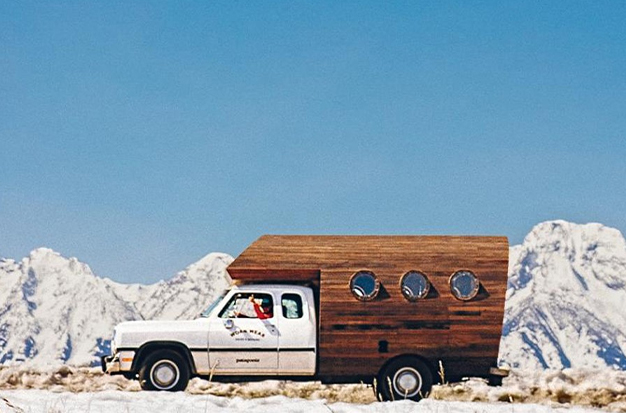
Who Resides In Patagonia Actually?
More animals and uninhabited land can be found in Patagonia than actual people. Undoubtedly, this adds to the appeal of visiting Argentine Patagonia. But people do exist in Patagonia, and they are a very tough breed. Neuquen, with a population of about 345,000, is the biggest city in Argentine Patagonia and all of Patagonia. There are 2 million people living in Patagonia as a whole, the majority of whom reside in Argentina.
The Tehuelche indigenous group were the original inhabitants of the area. Like many other indigenous groups, they were conquered and assimilated by European explorers. The southern region of Argentine Patagonia is known for its gaucho, or cowboy, culture. The ponchos that the gauchos wear are distinctive because they are made of thick wool and have buttoned necks that keep the cowboys warm in the chilly Patagonian climate. As previously mentioned, there is a Welsh population in Patagonia, particularly along the coast, who speak a distinctive variety of Welsh known as Patagonian Welsh.
Tourism: Patagonia In Chile VS. Argentine Patagonia
Two nations can both enjoy Patagonia’s beauty: Although this region’s name is shared by both Chile and Argentina, the two countries’ landscapes are completely different from one another. Both sides are stunning and have breath-taking landscapes that will take your breath away. Two Patagonias could be discussed, each offering unique travel opportunities and tourist infrastructure.
Both options boast the most breathtaking views and breathtaking mountain scenery: glaciers, lakes and virgin land. However, the appeal of each side differs. To put it simply, the route in Chile is much greener, with dense forests and numerous waterfalls, while the route in Argentina crosses a more arid landscape resembling the desert.
Your mood and idealized road trip expectations will have a big impact on what you decide to see in Patagonia.
Must-See Attractions In Argentine Patagonia
Three main districts make up Argentine Patagonia: The Atlantic, the Lake District, and Southern Patagonia. While each is distinct in its own way, they are all united by the wonders of nature.
With breathtaking views in every direction, the Argentine Lake District is an absolute necessity. The Nahuel Huapi Lake, one of the largest lakes in the area, is one of the top attractions in the Lake District, which is best reached from Bariloche. In addition, if skiing is your thing, check out the mountain resort at Cerro Catedral.
Also make sure to visit the Atlantic region of Argentine Patagonia, which is home to remarkable natural refuges like the Punta Tombo Wildlife Sanctuary. Watch the Magellanic penguins at Punta Tombo; they are more numerous in Patagonia than people are! Welsh-speaking communities like Trelew can be found in this region of Argentine Patagonia. In order to start over and protect their cultural heritage, the Welsh emigrated to Patagonia in the 1860s. A celebration of Welsh arts and literature, the Eisteddfod, is held here. Drop by for a cup of tea or come for the event. The Egidio Feruglio Museum of Paleontology, which is located in Trelew, is another place where you can learn more about the region’s remarkable history of dinosaurs.
When traveling through Argentine Patagonia, don’t skip Southern Patagonia. Perito Moreno Glacier, one of the must-see attractions in Patagonia, is located in Southern Patagonia, which is situated beneath the Lake District. You can immerse yourself in the untamed landscape and disconnect in El Calafate. Furthermore, Puerto San Julian, where Ferdinand Magellan first set foot in 1520, is located in the extreme south of Argentine Patagonia.
The Best Way To Get To Argentine Patagonia
The first stop must be Buenos Aires, Argentina, no matter where you are flying from. From there, you can take a trip to Patagonia.
The gateway to Argentine Patagonia is the city of Bariloche, which is located approximately 1,600 km (994 mi) to the southwest of Buenos Aires. The cost of a two-hour flight with Fly Bondi or Norwegian Air from Buenos Aires to Bariloche (BRC) is approximately $70 (USD). A three-hour flight from Buenos Aires gets you to El Calafate, and a three-and-a-half-hour flight gets you to Ushuaia.
Another option is to travel through Chile before continuing on to Patagonia in Argentina. Sky Airlines, a low-cost carrier from Chile, flies into Punta Arenas Airport (PUQ). You can take a bus across to El Calafate, Argentina, from there.
Where Can I Stay In Patagonia, Argentina?
Estancia Monte Dinero is a 100-year-old working sheep farm and such a cool experience to have while visiting The food at Monte Dinero is exceptional, and the rooms there are charming and have fireplaces. Estancia Monte Dinero is a family-run business that has been in operation for the past five generations and is run by Scotch immigrants’ offspring.
Rio Hermosa is a bit more upscale and right on the shores of the beautiful For those who love the rustic feel of a cabin, Nahuel Huapi Lake’s hotel is a great choice because it is surrounded by trees. In the warmer months, relax in the gardens, and in the winter, warm yourself by the fireplace.
Hotel Tunqueley is perfect for those seeking a more affordable nightly rate, while still enjoying a relaxing stay. Hotel Tunqueley is in a prime location in San Martin de Los Andes, just 0.6 miles from Lacar Lakeshore. Take advantage of home comforts like WiFi, a free breakfast, and parking. This is a fantastic choice for visitors coming to ski as it is only 12 miles from the Chapelco Ski Center.
Investigating travel packages is yet another choice. If you want to make the most of your time in Argentine Patagonia without having to worry about the logistics, this is fantastic. Here are a few interesting multi-day excursions.
For Argentine Patagonia, What Should I Bring?
When visiting Patagonia, it’s best to layer your clothing. In both rain and shine, wicking materials help you stay warm. When truly entering the wild, long underwear is a great starting point. Additionally, Patagonia experiences strong winds, making a protective outer-layer jacket essential. You can avoid having cold or wet feet by carrying an extra pair of lighter socks and a pair of warm socks.
Check out this excellent video for a comprehensive guide to packing for Patagonia in Argentina:
Shop at hiking retailers like Patagonia Inc. for appropriate attire. or It’s also a good idea to carry a small first aid kit when hiking, according to The North Face. Although they range in size and quality, bandages for blisters are probably the most important thing to include.
Conclusion
In some ways, Patagonia in Argentina is at the very edge of the world. Without a doubt, I suggest visiting Argentine Patagonia, a wild place of one’s imagination. No matter if you love to ski, want to see wildlife, or just want to take in the breathtaking views, you won’t regret visiting this incredible location.




